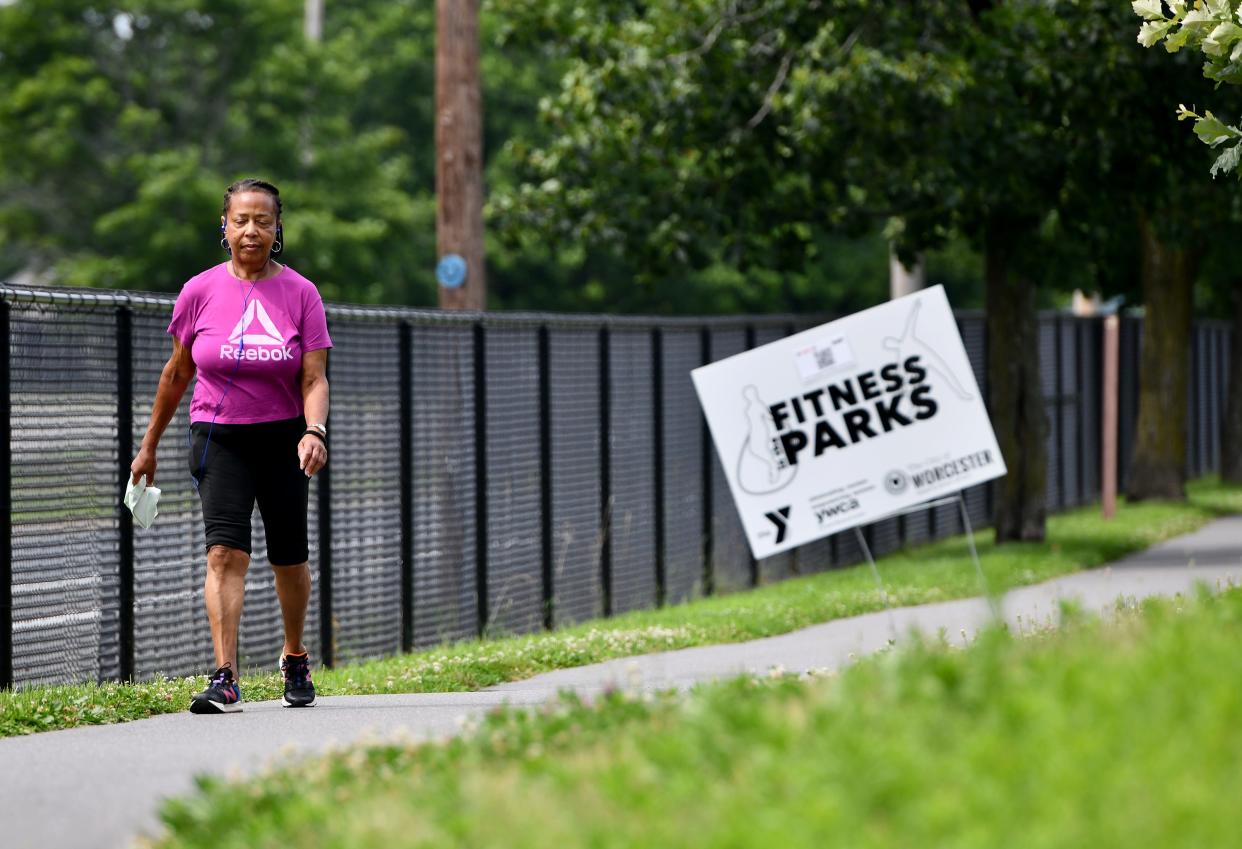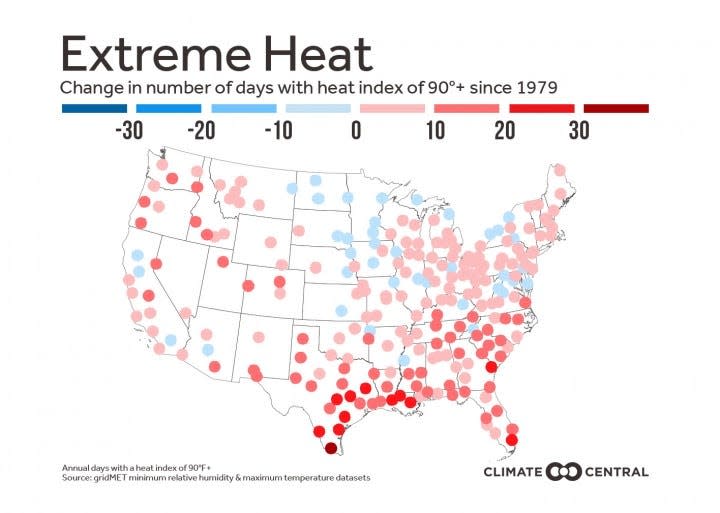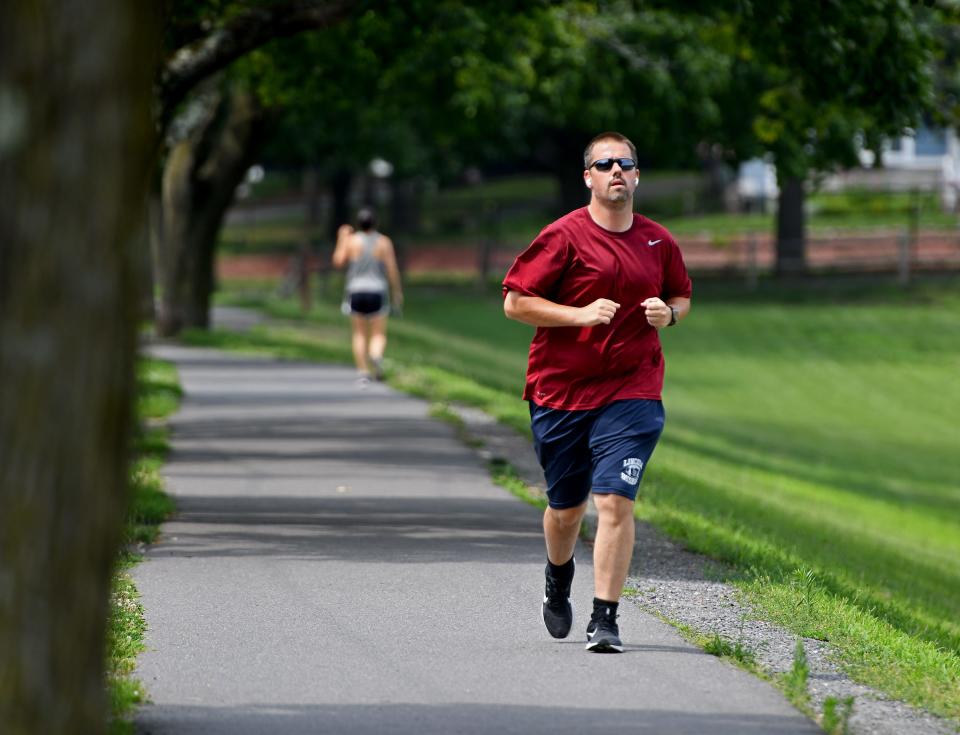Humid as heck: What to know when exercising outside in a Worcester summer

WORCESTER – Dorothy Cox of Worcester was taking her regular five-mile walk at Quinsigamond State Park this past week when the temperature was in the mid-80s, with some humidity and a higher heat index.
She is not a fan of what the weather is up to.
“When it’s above 90 degrees, no way,” Cox said, about mixing exertion and the outdoors. “Overall, climate change is not a good thing.”
A stretch of humidity has made it somewhat unpleasant outside, but at least we’re not living in Phoenix, where temperatures are a scorching 110 degrees. Not just one day or a week, but they've actually run that high for over two weeks.
We can also be thankful that we're not in the soup of the 100 million folks in the western U.S. who are broiling under a dangerous heat dome, with weather alerts covering a wide range of states. Worcester obviously isn’t living under those conditions, and has not had a summer heat wave yet.
But heat and its direct link to climate change is a consideration for Worcester neighborhoods right now. People who want to go outside and stay fit in the hot summer months - or have to be outdoors for work - are consulting the forecast. It's vital to do that in this era, experts say.
Expert advice for staying safe if you're walking, working out
From the serious marathon runner to walkers like Cox, many residents want to go outside and exercise in the hot summer months. Experts caution that no matter your fitness level, it's important to keep tips in mind to stay healthy.
One expert offering tips is Andrew Piazza. He climbs athletic stadium stairs in Florida, where the Worcester State University associate professor of public health is spending the month before heading back to Worcester.
Piazza does his climbing later in the afternoon, when it’s cooler. That’s one of Piazza’s tips – do your exercise when the sun isn’t shining its brightest.
Understand the heat index, a combination of air temperature and relative humidity. When humidity levels are high, the body’s loss of sweat during exercise isn’t evaporating the way it should. Evaporation is the body’s natural cooling mechanism. If it's curbed, the result can be heat exhaustion and heat stroke.
During Worcester’s current humid stretch, the heat index has often been higher than the air temperature.

Summer heat safety: Know your limits
Stay hydrated is a tip from Kelsey DeVoe, a nurse practitioner and director of health services at the College of the Holy Cross. Drink fluids before, during and after an outdoor workout. When it's over and it’s oppressively hot outside, run under a sprinkler or take a cold shower to lower body temperature.
“I’m more of an indoor girl,” said Devoe, who takes her 1-year-old child for walks in the morning to avoid the heat. “I'm not a fan of heat and climate change. It makes heat worse.”
Additional workout tips from Piazza and Devoe include:
Wear light, breathable clothing that promotes sweating so the body’s natural cooling mechanism can do its thing.
Know your limits. If you’re out of shape or not used to exercising in hot weather, start slowly and build up to a more manageable workout.
For those taking medications, be aware of any possible side effects from outdoor exercise.
Piazza and Devoe also emphasized the importance of knowing the signs of heat exhaustion and heat stroke from a workout that has gone too far. Dizziness, nausea and muscle cramps are associated with exhaustion, and the remedy is get inside right away where it’s cool. Also, drink plenty of liquids.
'Get emergency help'
Heat stroke is considerably more serious.
It occurs when the body can no longer control its temperature: The body’s temperature rises rapidly, the sweating mechanism fails, and the body is unable to cool down. When heat stroke occurs, your body temperature can rise to 106°F or higher within 10 to 15 minutes.
“Get emergency help,” said Deveo of a potentially life-threatening moment when symptoms can include confusion, a fast heart rate and vomiting.
As the temperature rises, so does the risk of heat-related illnesses, like heat exhaustion and heatstroke.
It's important to recognize the signs and symptoms of heat illnesses, and learn how to prevent them. Learn more: https://t.co/Un1dEc1KDK pic.twitter.com/gUN6x4hOhb— Mayo Clinic (@MayoClinic) July 13, 2023
Get naked: Summer is the best time
Believe it or not, it’s something to consider for those who exercise outside on hot days, according to Robert Huggins, assistant research professor in the kinesiology department at the University of Connecticut.
But make sure you do it in the privacy of your home after a workout, not while you’re jogging or playing tennis.
Huggins explained the reason to get naked is so you can know your sweat rate.
Step on a scale naked before a workout, holding the amount of fluids you plan to drink while exercising. When you return home, take off all your sweaty clothes and get back on the same scale, holding the same bottles your started your workout with. It doesn't matter if they're empty or partially full.
Take the time of your workout, divide it by the difference in weight you recorded before and after the workout - that is your change in body mass - and you're left with the amount of sweat you lost. Then it's time to replace that amount with fluids.
“I lose two liters (of fluids) per hour of exercise. It’s like a bottle of Coca-Cola,” said Huggins, who is an outdoor trail runner.
Huggins also pointed out that when we sweat we don’t just lose water. We also have a depletion of electrolytes.
“Most of us have no idea how much sodium and chloride and potassium we lose through our pores when we sweat,” he said, so he recommends buying a sweat patch that you can buy online or at a local pharmacy and put it on your arm while working out. The patch tells you how much sweat you lost, so you know how much fluid to drink to get a healthy level of water and salt back into your system.
Huggins noted we lose an average of one gram of sodium per hour during a typical workout.
Not sweating it, because heat doesn't bother him

Justin McKay didn’t seem to be sporting a sweat patch while jogging at Lake Park. The Holden resident likes working out in the heat, and he makes sure to drink plenty of fluids before and after his run.
Climate change recently threw a wrench in McKay's schedule, as wildfire smoke from Canada resulted in recent air quality alerts in Central Massachusetts. The inconvenience forced McKay to put his running shoes in the closet.
“I laid low,” he said.
The Telegram & Gazette is investigating the effects of a rapidly heating planet on people who live in our city. Follow along with "City on Fire" as we report the struggle with summer temperatures, even in New England. This is part of the USA TODAY project Perilous Course. Contact reporter Henry Schwan to be included in a story if you have been affected by heat: expense of air conditioning or lack of it, health risks, less access to green space, concern about pets and animals in the summer conditions, worry about an older loved one, etc.
Contact Henry Schwan at henry.schwan@telegram.com. Follow him on Twitter: @henrytelegram.
This article originally appeared on Telegram & Gazette: Humid, warm: How to stay safe exercising outside on muggy summer days

